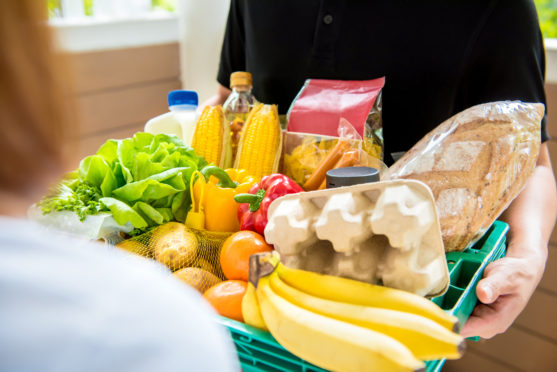
Growth in online grocery shopping is slowing amid consumer frustration about order problems and delivery charges, figures suggest.
The number of Britons who shopped online for groceries dropped from 49% to 45% between 2016 and 2018, with 63% saying they had experienced an issue with an order in the past year, a survey for analysts Mintel found.
Last year online groceries in the UK hit £12.3 billion, up 9% from 2017, and made up 7% of total grocery retail sales.
Over the next five years, online grocery is forecast to account for 10% of all grocery shopping, with sales growing by 60% to reach £19.8 million in 2023, Mintel said.
But while younger Britons are still enthusiastic about the convenience of having groceries delivered, middle-aged and older shoppers are increasingly reluctant to do their supermarket shop online, the poll indicates.
While just over a third (35%) of those aged 45 and over report buying some groceries online, the number who have “never bought groceries online and have no interest in doing so” has grown from 34% in 2015 to 42% in 2018.
According to the poll, the most common reason why consumers do not shop online is that they prefer to choose fresh products themselves (73%), but there are also concerns around high delivery charges (24%) and minimum spend (18%).
Almost two-thirds (63%) of online shoppers have experienced an issue with their order in the past year, with 26% finding they were missing products, 25% suffering incorrect product substitutions and 24% receiving items that were out of date or had a short shelf life.
A further 20% had received damaged goods and the same proportion had received a late delivery.
Nick Carroll, associate director of retail research at Mintel, said: “Online grocery is, alongside the food discounters, one of the fastest-growing segments within the wider grocery sector.
“However, growth is slowing and the number of users is plateauing as retailers struggle to encourage new customers to try their services.
“Many consumers remain reluctant to buy fresh products online, concerns around substitutions persist and delivery charges are still off-putting, particularly in a market where value is key.
“However, most importantly, online services are still best suited to the traditional big-basket weekly shop, at a time when consumers are increasingly shopping on a top-up or when-needed basis.”
Mintel surveyed 2,000 internet users aged 16 and over in December.

Enjoy the convenience of having The Sunday Post delivered as a digital ePaper straight to your smartphone, tablet or computer.
Subscribe for only £5.49 a month and enjoy all the benefits of the printed paper as a digital replica.
Subscribe